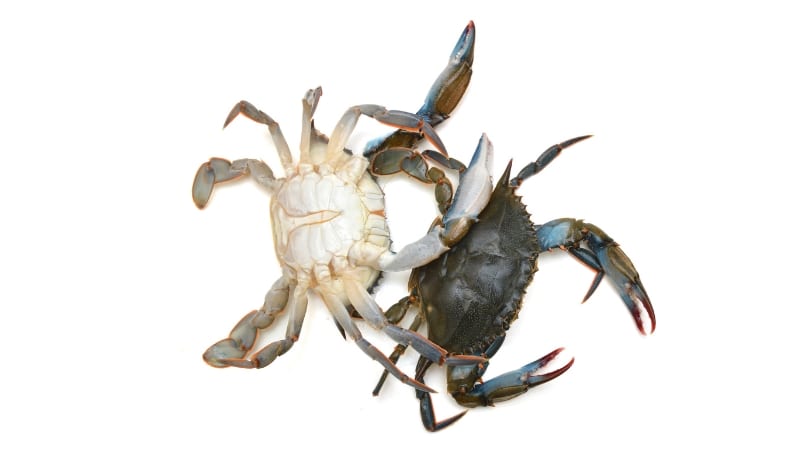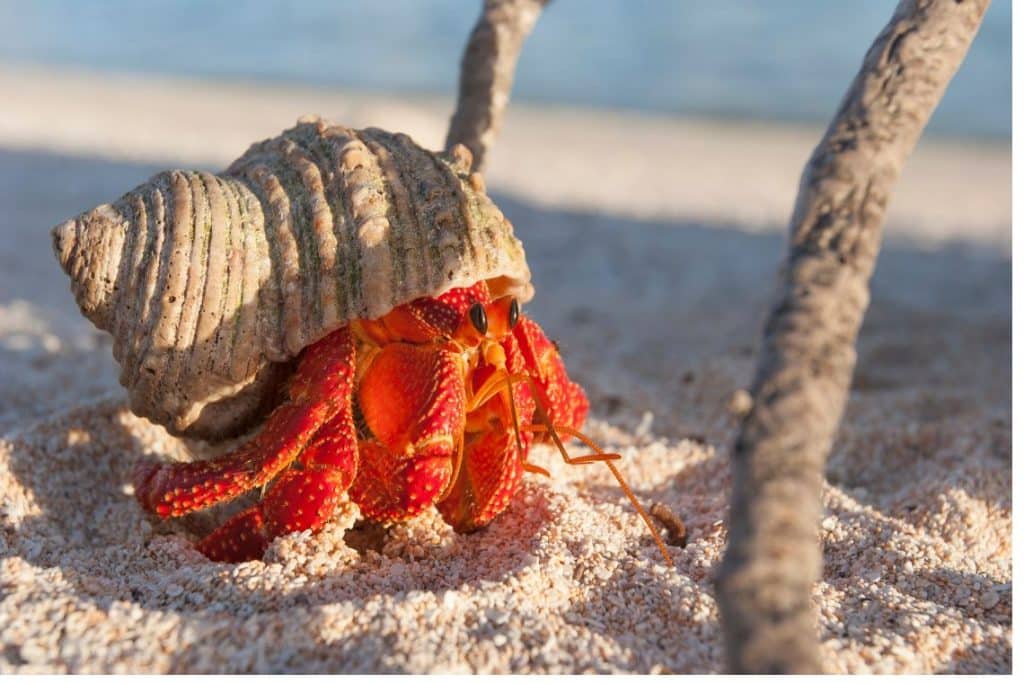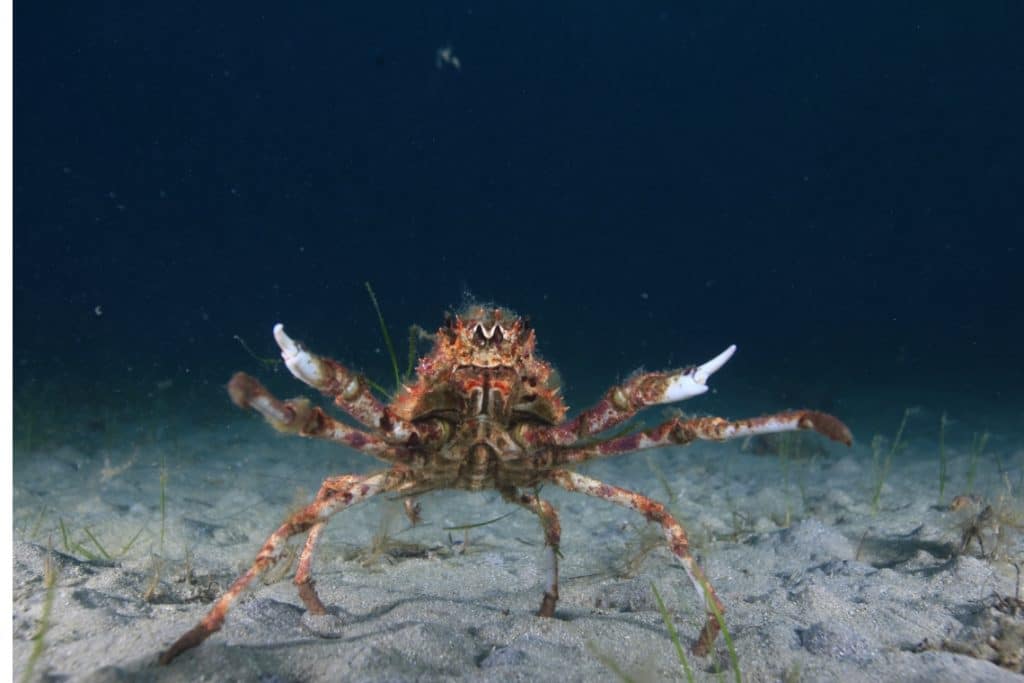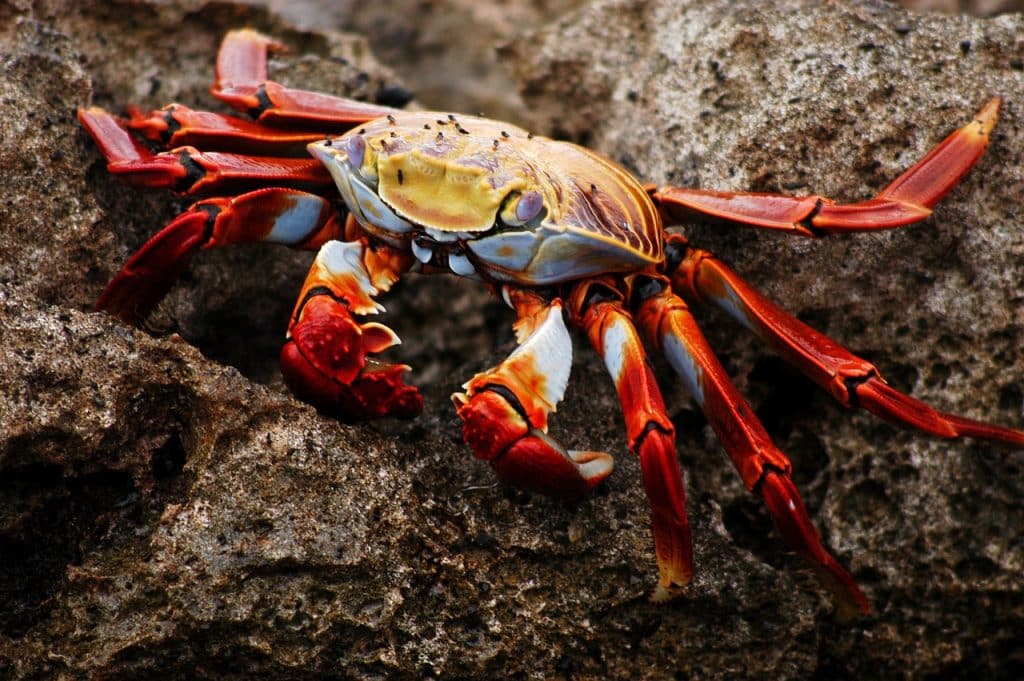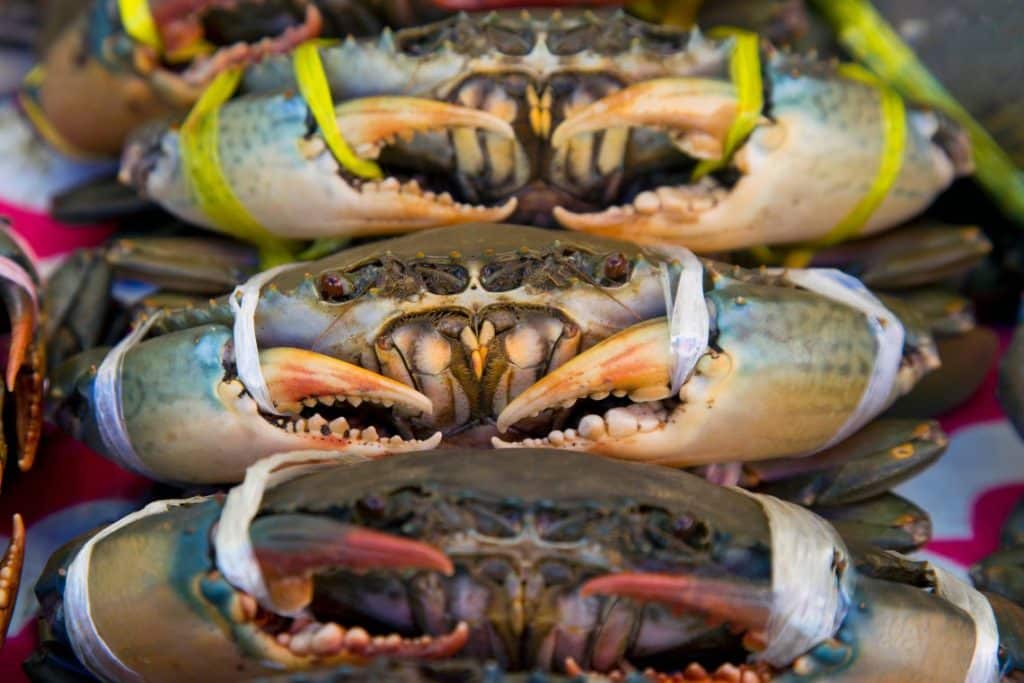The Sally Lightfoot Crab is a species of crab found in the Galapagos Islands with a striking red, yellow, and blue coloration. They are known for their exceptional agility and ability to quickly move across rocky shorelines.
Read More:
These crabs have adapted to their environment, using their powerful legs and sharp claws to hunt for small prey and avoid predators. Despite their small size, Sally Lightfoot Crabs play an important role in the ecosystem as they help control populations of algae and other marine organisms.

With their vibrant colors and fascinating behavior, these crabs are a favorite subject for photographers and visitors to the Galapagos Islands.
Evolution And Adaptations Of Sally Lightfoot Crab
The Sally Lightfoot Crab is a fascinating creature known for its swift movement and vibrant colors. Its evolution and adaptations have allowed it to thrive in its rocky coastal habitat, with features such as agile legs and a hard exoskeleton that offer protection from predators.
Sally Lightfoot Crab, with its vibrant appearance and graceful movements, is a fascinating creature found primarily along the rocky shores of the Galapagos Islands. This small crustacean has evolved and adapted unique characteristics over millions of years, enabling it to thrive in its challenging coastal environment.
In this section, we will explore two remarkable aspects of the Sally Lightfoot Crab: their camouflaging and colorful shells, as well as their agile and acrobatic locomotion. We will also delve into their unique feeding habits.
Camouflaging And Colorful Shells:
- Sally Lightfoot Crabs possess an impressive ability to blend seamlessly into their surroundings, using their exquisite camouflaging shells.
- Their shells showcase a striking array of bright colors, including vibrant reds, oranges, and blues, which not only serve as camouflage but also contribute to their aesthetic appeal.
- The combination of their vibrant coloration and their flattened bodies allows them to hide among the rock crevices and algae-covered surfaces, providing them with excellent protection against predators.
- The adaptation of their shells not only aids in attracting potential mates but also acts as a visual deterrent to potential threats.
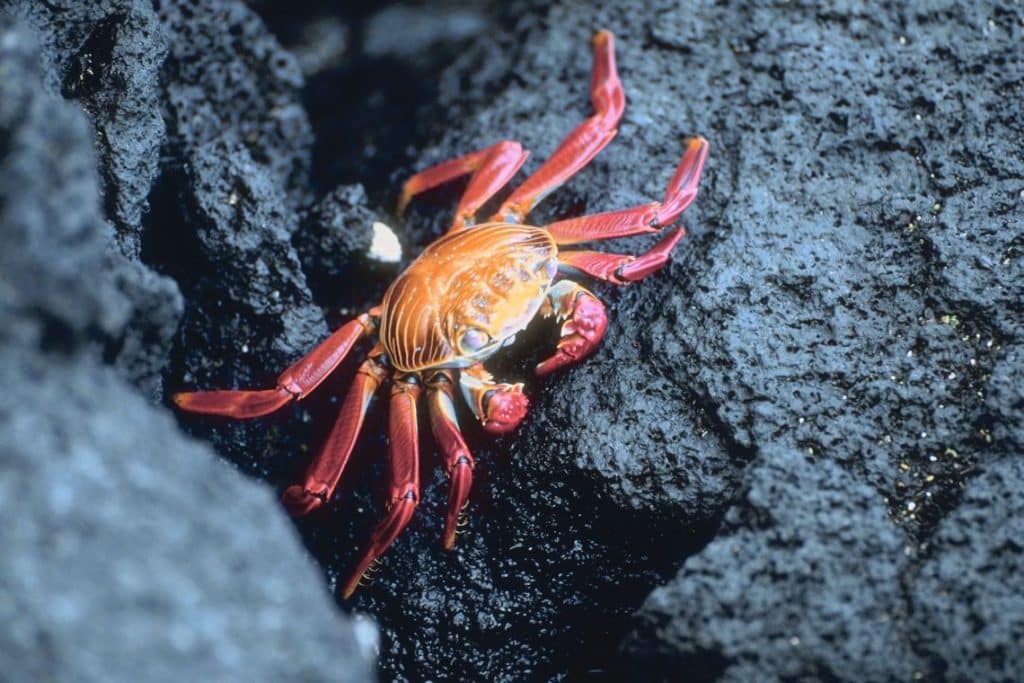
Agile And Acrobatic Locomotion:
- Sally Lightfoot Crabs are well-known for their remarkable agility and acrobatic movements, which contribute to their survival in the challenging coastal environment.
- With their powerful, muscular legs, they can swiftly navigate uneven and slippery surfaces such as rocks and tidal pools.
- Their ability to move swiftly in any direction allows them to escape from predators and capture their prey effectively.
- Sally Lightfoot Crabs display incredible acrobatics, often using their hind legs to jump from one rock to another with ease, further enhancing their ability to evade predators and explore their surroundings.
- Their exceptional locomotion skills ensure their survival in the dynamic and ever-changing coastal landscape.
Unique Feeding Habits:
- Sally Lightfoot Crabs are opportunistic omnivores, meaning they have a diverse diet and readily consume a variety of food sources.
- Their feeding habits include scavenging for dead animals, grazing on algae, and even catching small invertebrates using their sharp pincers.
- They are known to be efficient cleaners, as their diet includes removing parasites and dead skin from larger marine animals.
- Sally Lightfoot Crabs have evolved to take advantage of their coastal environment and its available food sources, contributing to their overall survival and adaptation.
Sally Lightfoot Crabs have not only successfully adapted to their rocky shore habitat but have also earned the admiration and awe of many observers. Their remarkable camouflaging and colorful shells, agile and acrobatic locomotion, and unique feeding habits highlight their ability to thrive in a demanding environment.
The next time you encounter these captivating creatures on the shores of the Galapagos Islands or elsewhere, take a moment to observe their remarkable adaptations and appreciate their remarkable survival skills.
Habitat And Distribution Of Sally Lightfoot Crab
Sally Lightfoot Crabs are found along the rocky shores and islands of the Pacific and Indian Oceans. These crabs are known for their vibrant colors and agile movements.
The Sally Lightfoot Crab is a fascinating creature found along the Pacific coastline, specifically in rocky shorelines and intertidal zones. Let’s delve into their habitat and distribution in more detail.
Pacific Coastline
- Sally Lightfoot Crabs are commonly found along the Pacific Coastline, from North America to South America.
- They inhabit shorelines that stretch across countries such as the United States, Mexico, and Ecuador.
- These vibrant crabs can be spotted scurrying across the rocks and exploring tidal pools in various coastal regions.
Rocky Shorelines
- Sally Lightfoot Crabs prefer habitats with rocky shorelines, as these provide ample opportunities for refuge and protection.
- The presence of rocks allows the crabs to hide and seek shelter from predators, as well as access to abundant food sources.
- They are often seen navigating through crevices and clinging to the sides of rocks.
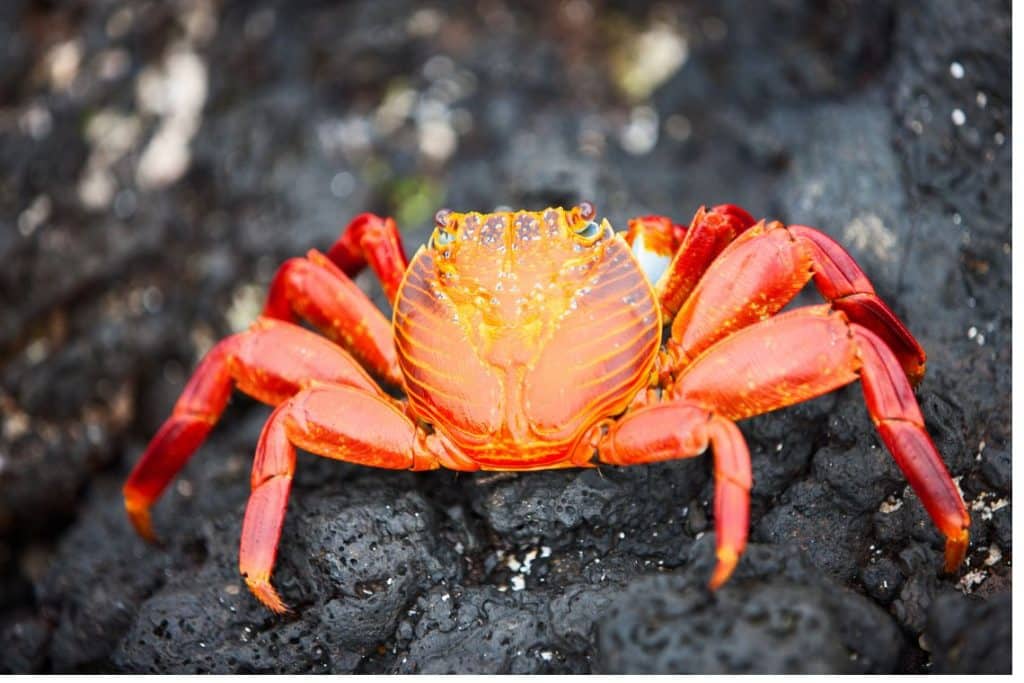
Intertidal Zones
- Intertidal zones are the areas between the high and low tide marks, and this is another favored habitat for Sally Lightfoot Crabs.
- These crabs are well-adapted to the constantly changing water levels and exposure to both air and water.
- Intertidal zones offer a wealth of intertidal flora and fauna, providing the crabs with ample food resources.
Sally Lightfoot Crabs can be found along the Pacific Coastline, predominantly in rocky shorelines and intertidal zones. Their habitat of choice is characterized by rocky terrain, which offers both protection and plentiful food sources. These remarkable crabs can effortlessly navigate the ever-changing intertidal zones, showcasing their impressive adaptability to their environment.
Behaviors And Interactions Of Sally Lightfoot Crab
The Sally Lightfoot crab displays fascinating behaviors and interactions, making it a captivating subject. Watch as it navigates rocky shores, gracefully moves with agility, and engages in intriguing social interactions with its fellow crabs. Its vibrant colors and lively movements make it a sight to behold.
Sally Lightfoot Crabs, also known as Grapsus grapsus, are fascinating creatures that exhibit a wide range of behaviors and interactions within their marine habitats. From social hierarchies and mating rituals to predator avoidance and defensive behaviors, these crabs have developed unique strategies to survive and thrive in their environment.
Additionally, their interactions with other marine species further shape their role within the ecosystem.
Social Hierarchies And Mating Rituals:
- Sally Lightfoot Crabs establish a social hierarchy within their population, with dominant individuals gaining access to the best resources, such as prime feeding grounds and sheltered areas.
- Mating rituals of Sally Lightfoot Crabs are visually striking, involving elaborate courtship displays and dances. Males often compete for the attention of females by waving their claws and performing rhythmic movements.
- Once a female chooses a mate, the pair will engage in a precise mating process. The male will transfer sperm to the female’s abdomen, and she will later release fertilized eggs into the water.
Predator Avoidance And Defensive Behaviors:
- Sally Lightfoot Crabs have evolved various defensive mechanisms to avoid becoming prey to predators. Their exceptional agility and speed allow them to swiftly navigate their rocky habitats, making it challenging for predators to catch them.
- When threatened, these crabs can utilize their sharp claws to deter predators and defend themselves. They can also blend seamlessly with their rocky surroundings using their vibrant colorations as camouflage.
- Another defensive behavior of Sally Lightfoot Crabs is their ability to quickly detach and regenerate their limbs if caught by a predator. This remarkable adaptation ensures their survival even in the face of potential predation.
Interaction With Other Marine Species:
- Sally Lightfoot Crabs have intricate relationships with other marine species in their ecosystem. They are often found foraging alongside marine iguanas, forming a mutually beneficial relationship where they share food resources.
- These crabs also interact with various bird species, including herons and pelicans, by associating with them during low tide when the birds are actively searching for prey in the intertidal zone.
- In some cases, Sally Lightfoot Crabs may serve as host organisms for small parasites and barnacles, forming an interesting symbiotic relationship where the crabs provide shelter and the parasites gain access to a nutrient-rich environment.
Sally Lightfoot Crabs exhibit fascinating behaviors and interactions within their marine habitats. Their social hierarchies, intricate mating rituals, predator avoidance and defensive behaviors, along with their interactions with other marine species, contribute to their ecological role and make them a captivating study in the world of marine biology.
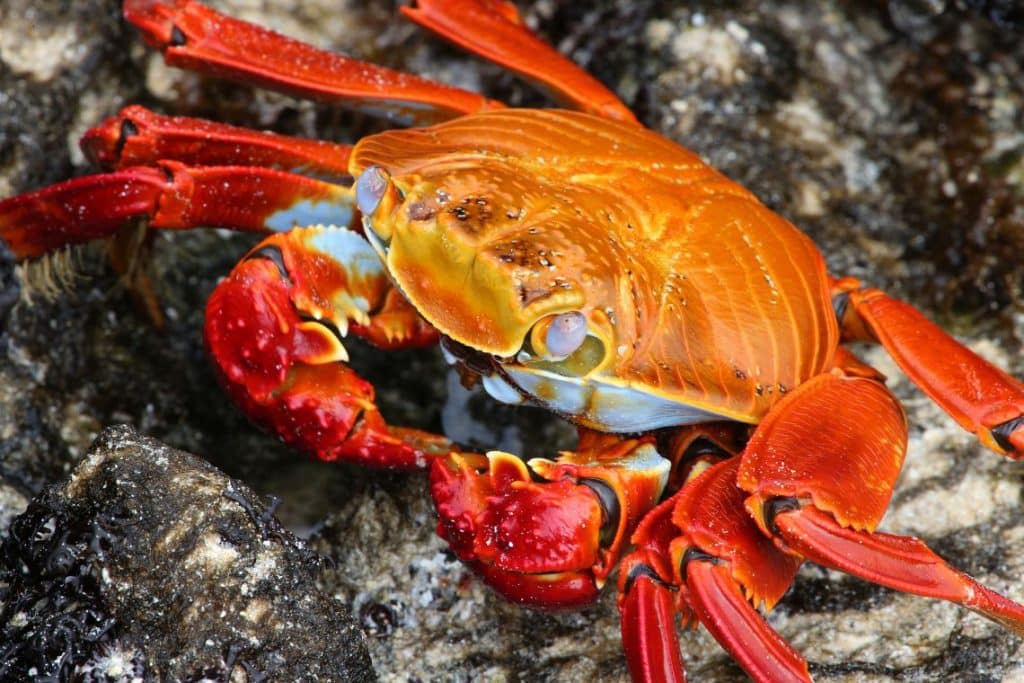
Frequently Asked Questions For Sally Lightfoot Crab
Are Sally Lightfoot Crabs Edible?
Yes, Sally Lightfoot crabs are edible and can be consumed by humans.
What Is The Purpose Of The Sally Lightfoot Crab?
The purpose of the Sally Lightfoot Crab is to clean parasites off marine animals.
What Are Some Fun Facts About The Sally Lightfoot Crab?
The Sally Lightfoot Crab is a colorful and agile creature found in the Galapagos Islands.
What Size Tank Does A Sally Lightfoot Crab Need?
A Sally Lightfoot Crab needs a tank with a suitable size for its comfort and mobility.
Conclusion
The Sally Lightfoot Crab is a fascinating creature that captivates both scientists and beachgoers alike. With its vibrant colors, agile movements, and remarkable ability to scuttle along rocky shorelines, it truly stands out among its crustacean counterparts. These crabs play a crucial role in maintaining the balance of marine ecosystems by feeding on algae and detritus, preventing excessive growth and decomposition.
As omnivores, they have a varied diet that includes small invertebrates, making them an integral part of the coastal food chain. Due to their agile nature and adaptive behavior, Sally Lightfoot Crabs have managed to thrive in diverse habitats, from rocky shores to mangroves.
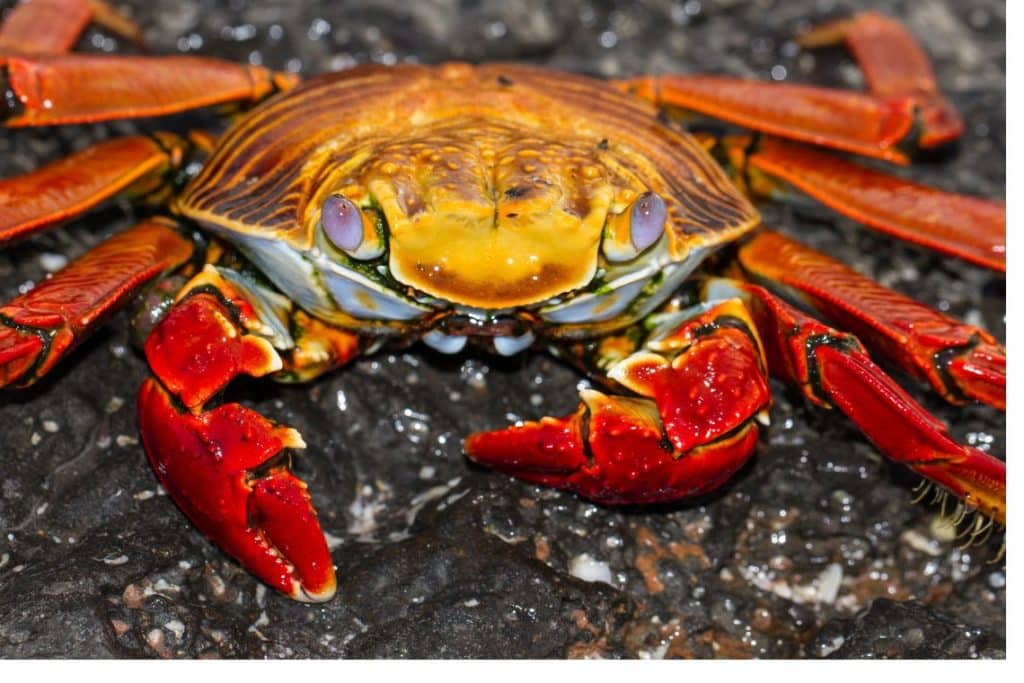
Their ability to quickly evade predators, such as birds and larger fish, is a testament to their evolutionary success. Whether you encounter a Sally Lightfoot Crab while strolling along the beach or exploring tide pools, take a moment to appreciate its incredible beauty and adaptability.
These crabs, with their lively energy and vibrant colors, remind us of the intricate wonders that exist beneath the sea’s surface. Explore and learn more about these amazing creatures to further your understanding and appreciation of the natural world.

